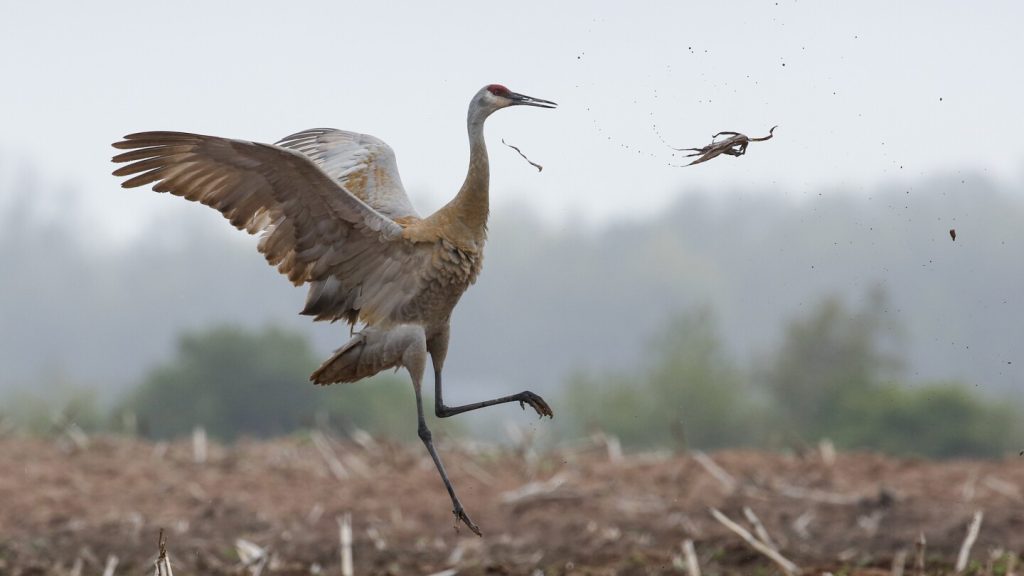The Joint Legislative Council’s 12-member Study Committee on Sandhill Cranes, which consists of legislators, farmers, and conservationists, is scheduled to have its first meeting on August 1 at the Horicon Marsh State Wildlife Area in Wisconsin. This committee has been tasked with finding ways to manage the state’s sandhill crane population and reduce the damage they cause to crops, including exploring the possibility of establishing a hunting season. Sandhill cranes, which breed in Wisconsin or migrate through the state in large numbers each spring and fall, have been known to feed on germinating corn seeds after planting, leading to significant crop damage, as reported by the International Crane Foundation.
Several states, such as Colorado, Kansas, Montana, Texas, and Wyoming, already have annual hunting seasons for sandhill cranes, according to the U.S. Fish and Wildlife Service. In Wisconsin, a bill was introduced in 2021 proposing a sandhill crane hunting season, but it did not receive a floor vote. The bill’s primary Assembly sponsor, Rep. Paul Tittl, is now serving as the chair of the study committee. However, the International Crane Foundation is against hunting sandhill cranes primarily due to their slow reproduction rate and the potential harm it could cause to endangered whooping cranes if hunters mistakenly target the wrong species. The foundation has instead been advocating for farmers to use a non-toxic chemical deterrent on their seeds to deter the cranes.
The establishment of a sandhill crane hunting season in Wisconsin has been a topic of debate for years, with proponents arguing that it could help manage the population and reduce crop damage caused by the birds. However, opponents, such as the International Crane Foundation, emphasize the potential risks to the already vulnerable species, including the whooping crane, if hunting is allowed. The study committee will strive to examine these complex issues and come up with informed recommendations for potential legislative changes in the future, taking into consideration both the economic interests of farmers and the conservation efforts to protect the crane populations.
The members of the Joint Legislative Council’s study committee on sandhill cranes come from a variety of backgrounds, reflecting the diverse perspectives on the issue. With legislators, farmers, and conservationists all participating in the committee, there will likely be lively discussions and debates on the best course of action to address the challenges posed by the sandhill crane population in Wisconsin. The committee’s goal is to gather comprehensive data, listen to stakeholders, and consider all factors before making any recommendations for potential legislative changes, ensuring that the decision-making process is thorough and well-informed.
The meeting scheduled for August 1 at the Horicon Marsh State Wildlife Area will mark the beginning of the study committee’s work, providing an opportunity for members to discuss the scope of the issue, review existing research, and identify potential solutions. As they delve into the complex and multifaceted nature of the sandhill crane population management, the committee members will have to navigate differing opinions and interests to reach a consensus on the best path forward. The outcome of their discussions and findings will likely have far-reaching implications for the future of sandhill crane conservation and the agricultural sector in Wisconsin, making it a significant issue for the state and its residents.
Overall, the study committee on sandhill cranes represents a crucial step in addressing the challenges posed by the bird population in Wisconsin and finding a balance between conservation efforts and economic interests. By bringing together a diverse group of stakeholders and experts, the committee aims to develop well-informed recommendations that will guide future legislative decisions on managing the sandhill crane population and reducing crop damage. The upcoming meeting on August 1 will set the tone for the committee’s work and signal the beginning of a thorough and rigorous examination of the issue, with the goal of finding sustainable and effective solutions that benefit both the wildlife and agricultural sectors in the state.


